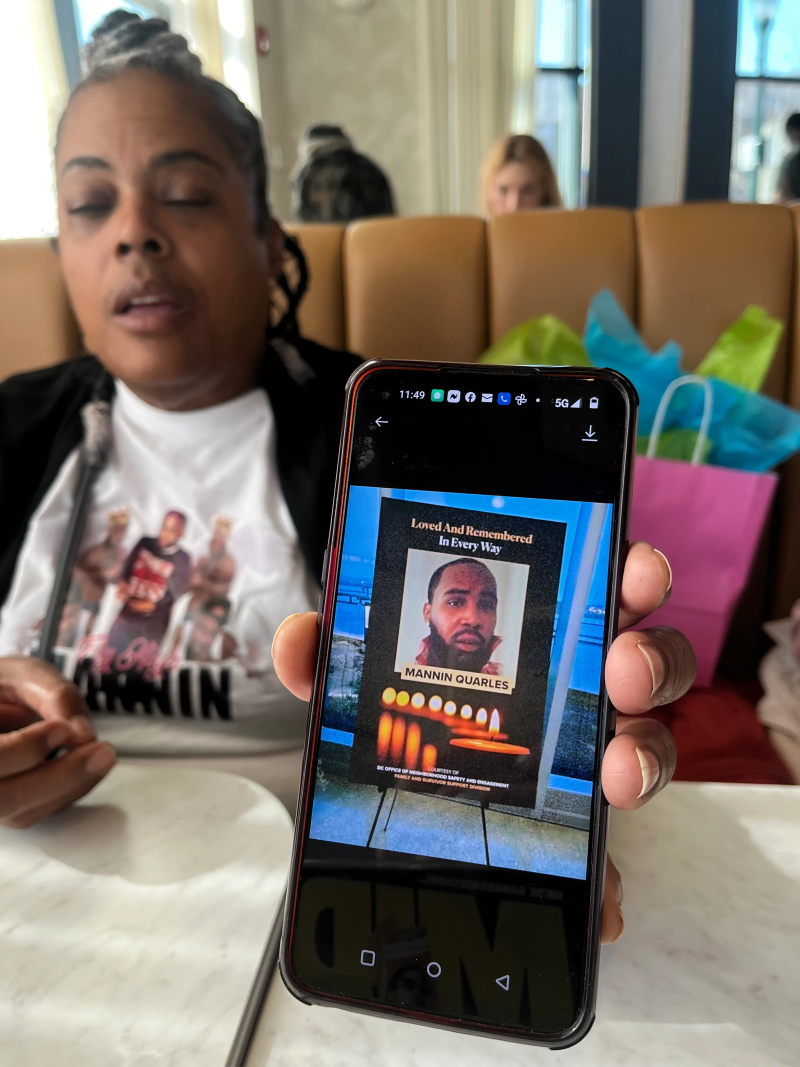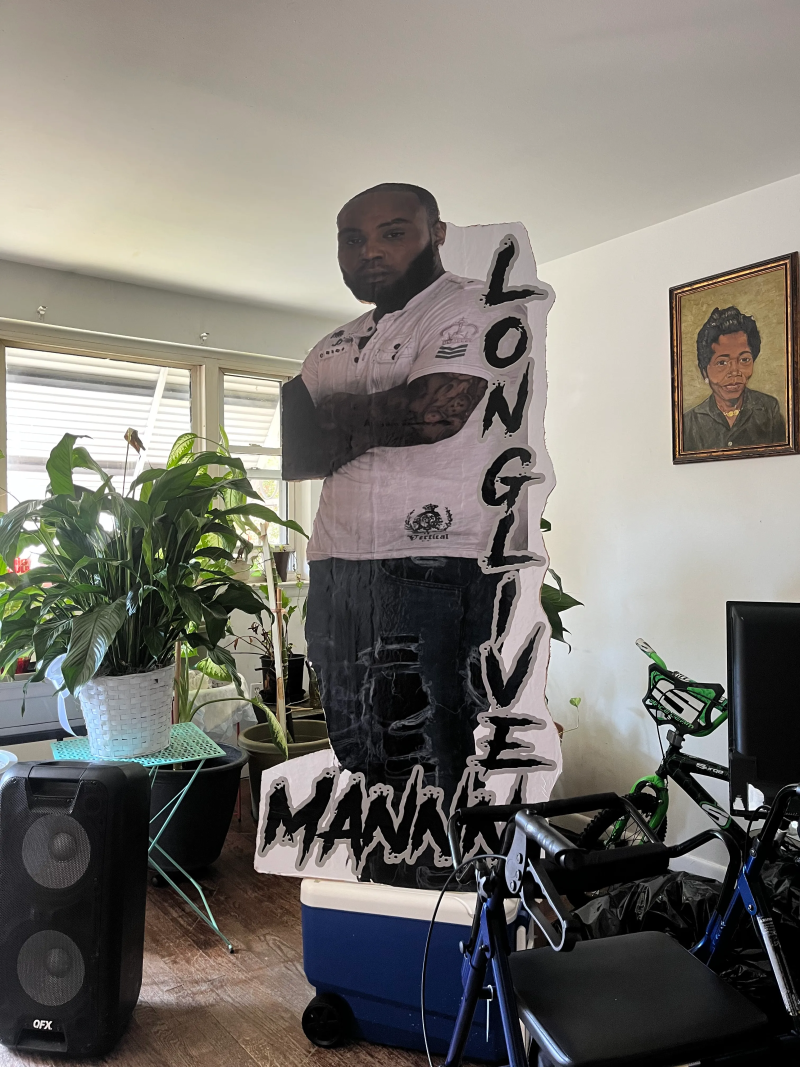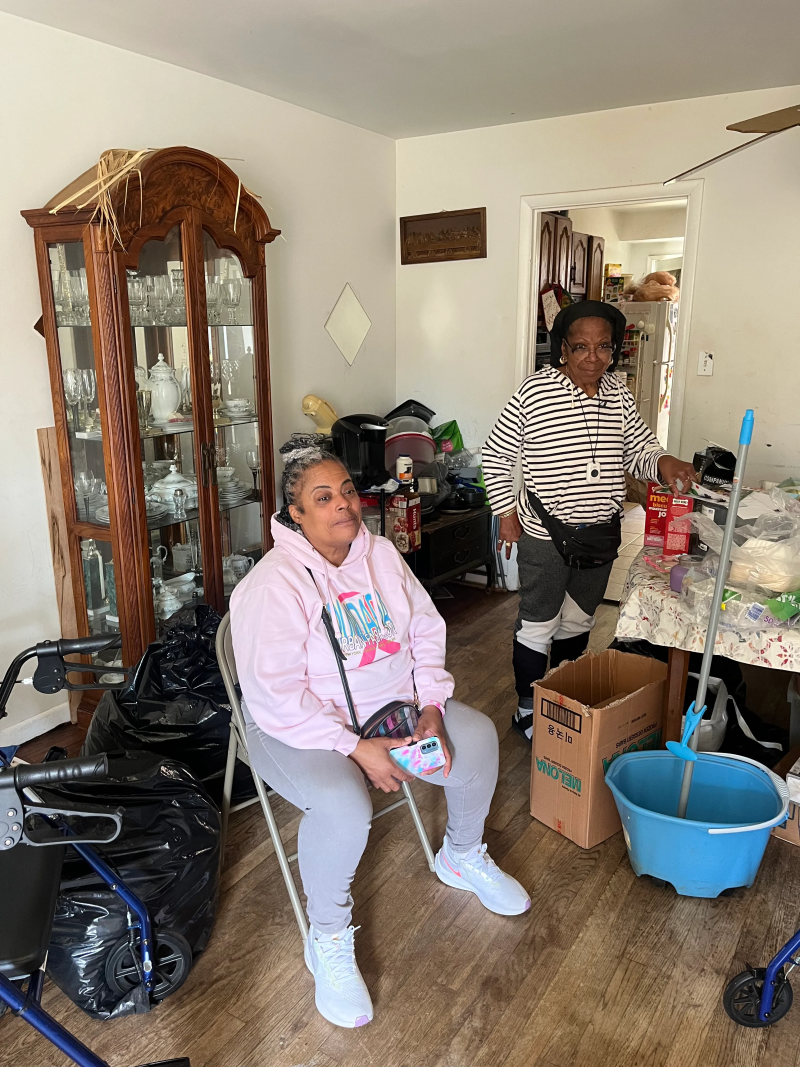Homicide rates dropped in big cities. Why has the nation's capital seen a troubling rise?
WASHINGTON – After Lisha Quarles’ son was gunned down in front of his church last fall, her 5-year-old grandson asked when his daddy would come home.
He asked again and again for months.
“How am I supposed to answer that?” Quarles asked.
The awful, unanswerable questions in the Quarles household are plaguing hundreds of families in the Washington, D.C., region this year as the homicide rate soars, despite decreases in big cities across the U.S.
Violent crime ebbed last year following a pandemic-era peak in most American cities. During the same stretch, Washington experienced its biggest surge in homicides in decades, with 274 lives lost, as law enforcement struggled to stem the killing. Although the city's staffing ratio outpaces other urban areas, the Metropolitan Police Department's homicide closure rate dropped to 52%, 10 points lower than in 2022.

MPD did not respond to questions about the rise in killings or the department's declining homicide clearance rate. However, local crime experts were quick to comment on the city's surging homicide rate, saying it requires the community's full attention.
“There's no question that (it's) alarming,” said David Muhammad, executive director of the National Institute for Criminal Justice Reform in Washington.
Civic leaders and officials have been scrambling to curb the violence.
Amos Gelb, founder and publisher of D.C. Witness, a non-profit organization that tracks the city's criminal justice system, said it’s been stunning to hear from communities grappling with the wave of violence.
"You speak to the communities," he said, "and there is incredible frustration this can’t be resolved."
Crime dropped nationwide after pandemic surge
The rise in homicides has made Washington an outlier. The nation's five largest cities saw a decline in killings last year. From 2022 to 2023, homicide rates dropped 11.9% in New York City, 16.4% in Los Angeles, 13% in Chicago, 20% in Houston and 22% in Phoenix, according to these police departments' internal statistics.
During the first two years of the pandemic, many cities saw a sharp rise in violent crime, Ames Grawert, senior counsel in the Brennan Center’s Justice Program, told USA TODAY. The shutdown of public spaces and services may have contributed to the problem, he said.
"Local public spaces like libraries closed," Grawert said. "Programs that we know are important to community safety, like violence intervention programs, cognitive behavioral therapy programs – things like that either closed or became significantly less effective, because you have to do those things face to face."
But as schools, businesses and community services came back, urban crime rates declined, with a few glaring exceptions.
"It is true, unfortunately, from the data that we've reviewed, that D.C.'s experience does seem to be different than a lot of other jurisdictions in the country," Grawert said.
Experts have a range of theories as to why.
Mayor pushes for police officer increase
While the return to normal coincided with a drop in homicides elsewhere, the opposite was true in the district, a phenomenon many are still trying to explain.
As the number of homicides – especially shooting deaths – ticked up throughout the year, Washington Mayor Muriel Bowser vowed to bring police enrollment up to 4,000. The department had reached its lowest staffing level in two decades in 2022, according to testimony from then-MPD Chief Robert J. Contee III.
In April, the mayor rolled out a $5,000 increase in hiring bonuses for new police recruits. Her approved budget for fiscal year 2024 includes $5.4 million in bonuses for new police hires.
Bowser did not respond to USA TODAY's request for comment about why the homicide rate has continued to increase.
Police increase could bring 'low return on investment'
Some advocates and community leaders question whether the increase in funding and crime-fighting personnel is the best way to lower the homicide rate.
Muhammad, who runs the National Institute for Criminal Justice Reform, said some research indicates hiring more police can result in a "low return on investment" when there’s an upsurge in violent crime.
What communities may need is more violence intervention programs and other alternative responses.
"There is, at some point, a question of what resources can we (bring) to bear? Is it worth a level of increase of officers to get us a relatively low decrease in crime?" Muhammad said.
Instead of pouring more money into MPD, Muhammad said, Washington could gain a higher return from developing alternative, community-focused responses to crime.
“I just don't know if the answer to that is ... giving police more," Muhammad said. "It might be, let's ask them to do less.”
The question of whether more police make a difference has been central in the research of Anna Harvey, a professor of political science at New York University and founder of the University's Public Safety Lab.
"There are a number of papers that suggest that hiring more police officers does, in fact, reduce violent crime in particular, including reducing the worst kind of violent crime ... homicides," Harvey said.
But, she added, "It's not just hiring more police but also how police are deployed."
Many officers, especially in the patrol division, spend a disproportionate amount of time responding to low-level calls, when their time would be better spent on serious cases of violent crime.
Muhammad also thinks it's key to drill down into how police officers spend their days.
Muhammad said he polled about 100 police officers asking whether they'd want to transition their jobs to focus on serious crime and violence, "like what you signed up for.”
“100% of them said yes.”

Homicide spike recalls violence of the 90s
The difference between Washington and other urban areas is not staffing on the police force. Washington has already hired more police officers than any other city in the country, retaining 5.7 officers for every 1,000 citizens in 2022, 3.3 more than the national average, according to FBI data.
The city had 1.4 more officers on average throughout the 90s, as it grappled with a wave of violent crime associated with the crack epidemic and more than 400 annual homicide deaths citywide in the first half of that decade.
During that spike 30 years ago, the MPD adopted aggressive police tactics that often targeted people in the city's Black communities, resulting in a contentious legacy that hangs over the conversation about staffing increases at the department today.
"We had tactics back in the 90s where we would have jump-out squads just going through the community, stopping everybody," said Hilton Burton, a retired MPD captain who headed the department's narcotics division during the early to mid-90s. "On the flip side of that, you would have other neighborhoods where you would see police walking up and down the streets saying hi to people."
The MPD attempted to make amends in impacted communities in the decades that followed, including implementing a requirement in 2018 that officers study critical race theory during their training. But data shows the department's most aggressive tactics have still overwhelmingly targeted Black citizens. A 2020 report produced at the request of the City Council found that 88% of arrests made by MPD's Narcotics and Specialized Investigations Division from August 2019 through January 2020 targeted Black people, who comprise 46% of the district's population, according to the Census Bureau.
Gelb, from D.C. Witness, said his conversations have helped him understand what's at the core of people's concerns.
"It’s not that they don’t want policing,” he said. “They just don’t want their sons getting beaten up by cops."
In some communities, the perception that police won't effectively protect the community from violence prompts some residents to take matters into their own hands, Gelb said.
"We started seeing this about five, six years ago, that people were not denying that they had guns," he said, "they were saying they had to have guns for protection."
"We heard it all the time in court," said LaTrina Antoine, editor-in-chief for D.C. Witness' watchdog site. People would say, "I was carrying it for protection. I don’t feel safe on my own block."

Families feel the frustration
Quarles said it took a lot of probing on her part before she heard back from police on the investigation into the slaying of her 32-year-old son Mannin Quarles, Sr., an avid boxer who rode dirt bikes and worked for the city's Department of Public Works.
"I told them I'm going to call as long as I live if no arrest is done," Quarles said. "As long as I live, I'll call every once a week."
MPD officials told USA TODAY via email that detectives contacted the Quarles family on Thursday. They declined to comment further on the ongoing investigation.
After more than three months of calling police weekly, Quarles received a call informing her that officers in Henderson, North Carolina, had arrested 43-year-old Darrick Miles in her son's Sept. 1 shooting in southwest Washington.
Still, the arrest could only bring so much consolation to a family suffering the agony of losing a loved one.
"It hurts. You have to come in the house and try to keep living," Quarles said. "Sometimes I just want to give up, but I can't."
Cybele Mayes-Osterman is a breaking news reporter for USA Today. Reach her on email at cmayesosterman@usatoday.com. Follow her on X @CybeleMO.
Disclaimer: The copyright of this article belongs to the original author. Reposting this article is solely for the purpose of information dissemination and does not constitute any investment advice. If there is any infringement, please contact us immediately. We will make corrections or deletions as necessary. Thank you.






